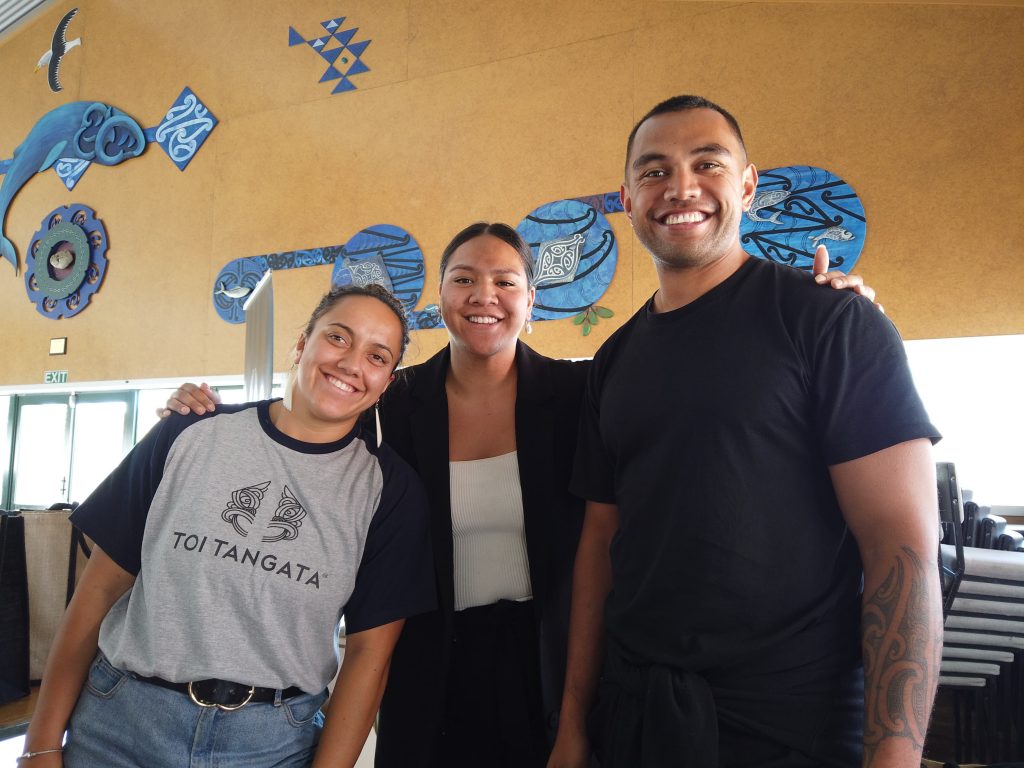13 Apr Ngā Pia Matihiko: Co-Design and Digital Literacy
By Aotea Frandi

L-R:Aotea Frandi, Tereana Ihakara, Te Rua Munro.
My role in my internship with Toi Tangata was to help explore the possibility of a tuakana-teina relationship between rangatahi and current health kaimahi.
This mahi is aimed at rangatahi taking ownership of their knowledge, harnessing their digital skills, and empowering them to be confident future contributors to the workforce.
My Project, Ngā Pia Matihiko: Growing the Digi-Puna, is a seeding grant project funded by The New Zealand Vodafone Foundation, which explores a potential relationship between rangatahi new to the health workforce and current kaimahi.
The focus of this project is supporting rangatahi into the health workforce by celebrating them as digital natives, born into the age of advanced digital technology and literacy.
The aim for Toi Tangata is to grow the digital literacy of the current health workforce, while contributing to workforce development and growth.
We organised two co-design sessions (one with current kai mahi and one with rangatahi) to explore the tuakana- teina approach.
Co-design is a design approach that is strengths based, community led and places a huge emphasis on sharing matauranga between organisations and people in the community so that both parties play a role in creating change.
The results from the co-design did highlight that rangatahi are digitally literate with age-relatable applications not only at using devices but at using social media which in fact has become a great marketing tool for health promotion and our Kaimahi were open to having rangatahi play a role in growing digital literacy in the workforce. These kōrero definitely highlighted the digital talent and knowledge pool of both the current kaimahi and rangatahi.
Co-design has definitely challenged me! Coming from an academic background I found it difficult to get my head around co-design. It was difficult in a way that I have been so used to conducting research or design.
For instance in one of my co-design sessions I was able to bring my pēpi, this in some way would not be ok in other research/design approaches but really emphasises how to-design is whānau led. I also noticed that bringing my pēpi helped break a power-dynamic between me and the rangatahi that I was interviewing.
I felt they were able to see that I was a ‘real person’ and felt more comfortable to korero and share what they had to say, rather than a ‘researcher’. This made me realise sometimes I can get myself stuck in a little bubble and restrict my approach to research.
Remembering to keep it real helped me feel more comfortable in the co-design process and in the growing the digi-puna’ kaupapa. Being at toi-tangata has helped me paint a better picture of how I might want to approach any mahi I want to do in the future.
I want to shout out to Alex and the team at Cause Collective for taking the time to teach myself and the other Interns about co-design and the awesome mahi that they do. Being a part of a design process from the start certainly allows the feelings of gratitude to come through and I am grateful for that.
Ngā mihi aroha.
This article was written by Aotea Frandi, a Postgraduate Clinical Psychology student at The University of Auckland. Aotea who was a member of Toi Tangata’s Growing The Puna Internship program for 2019-2020.



